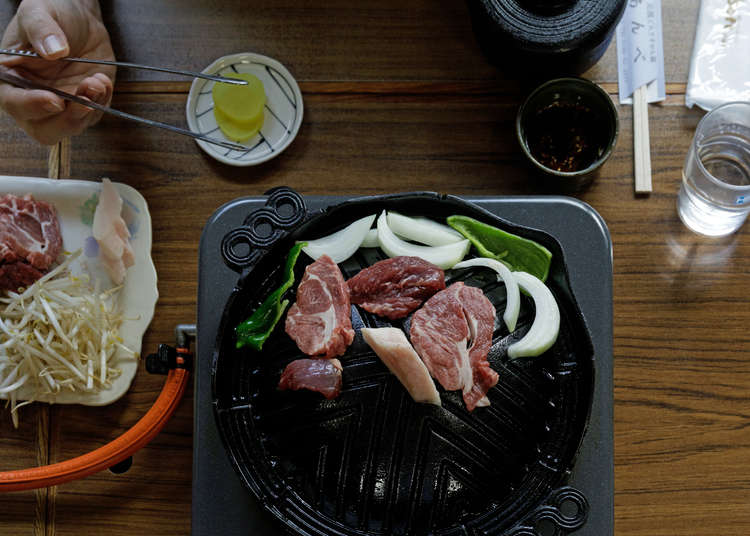
Tono is an area of rich history, culture, and legend in Japan's northeastern prefecture of Iwate. Visitors to the area can explore recreated villages, learn about the mythical mountain men and river sprites from the pages of The Legends of Tono (1910), and enjoy tucking into Tono's original food culture.
Visit a Tono lamb-and mutton-barbecue pioneer
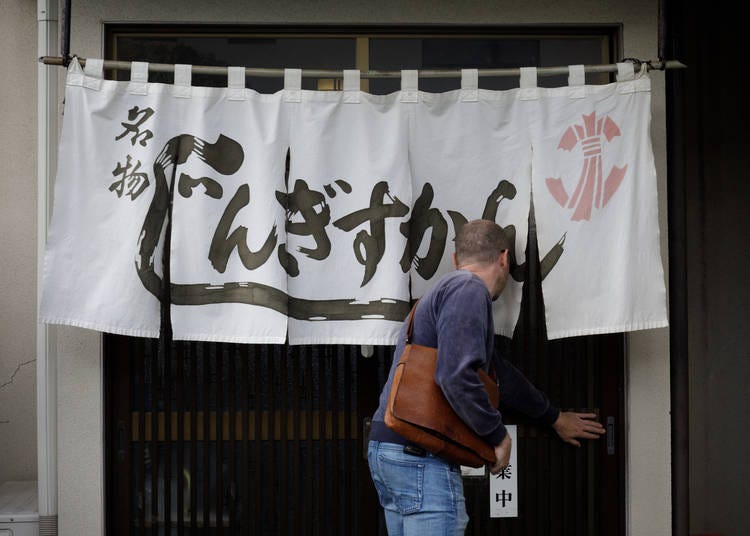
Tono cuisine centers around jingiskan, a lamb or mutton barbecue. In Japan, the dish - supposedly named after Genghis Khan, the great Mongolian warlord - is more associated with Hokkaido, the country's northernmost main island. However, Tono is one of several areas in Japan to have a long history with the dish, and the first-ever jingiskan restaurant, Jingiskan no Anbe, is in central Tono.
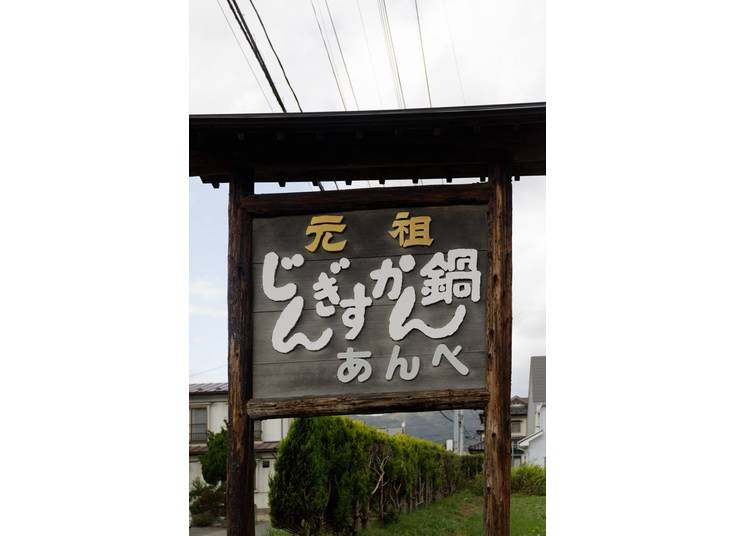
The first owner of the store introduced jingiskan to the Tono area after returning from Manchuria at the end of the Pacific War (1941–1945) with a taste for lamb and mutton meat. There were two main factors behind the success of jingiskan in Tono: Unlike many other places in Japan, Tono was able to procure fresh lamb meat, as sheep were bred locally for wool.
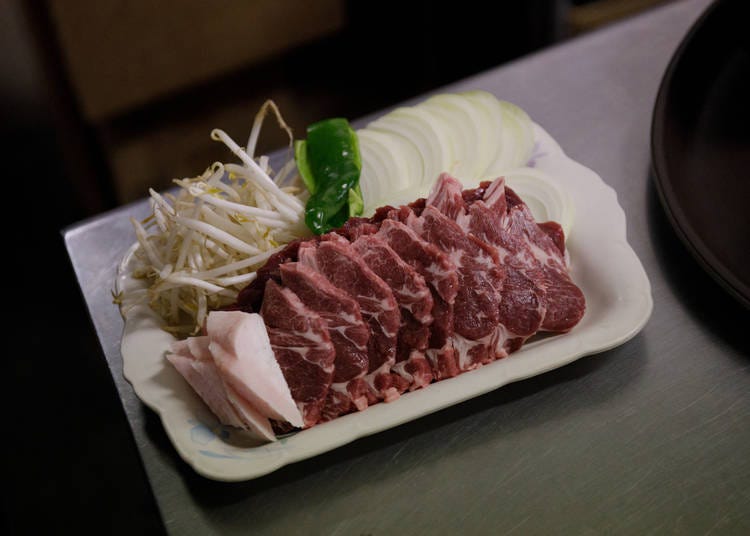
The second reason was the popularity of the store's original sweet and tangy dipping sauce. Visitors to Tono shouldn't miss out on a trip to the restaurant for a taste of Tono history, tender meat, and unique flavoring.
The secrets behind Jingiskan no Anbe's success
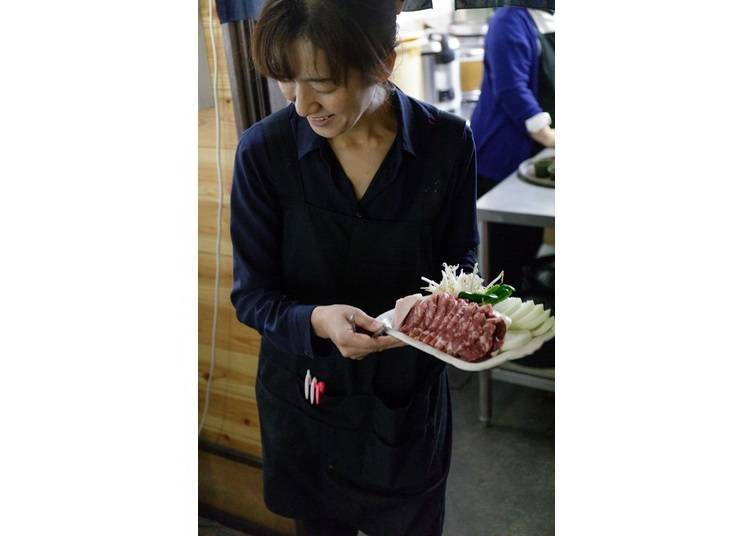
Jingiskan Anbe is the home of Tono jingiskan and is in central Tono, around 10 minutes on foot from Tono Station. It's been serving customers for over 70 years and throughout that time has perfected the art of barbecuing lamb and mutton.
The store's third-generation owner is Yoshiya Anbe. Yoshiya's grandfather opened the restaurant and was the pioneer behind the popularization of jingiskan in Tono. Yoshiya, who grew up watching his own father at work in the restaurant, explains some of the reasons behind the shop's popularity, saying, "All the meat is high-grade Australian lamb and mutton, and we purchase it chilled, which locks in the freshness."

Another factor behind the meat's tenderness is that "the meat is only cut after customers have placed the order," says Yoshiya. He further notes that when cutting the flesh, his staff carefully check the direction of the fibers before making the cut - another technique that ensures tenderness.
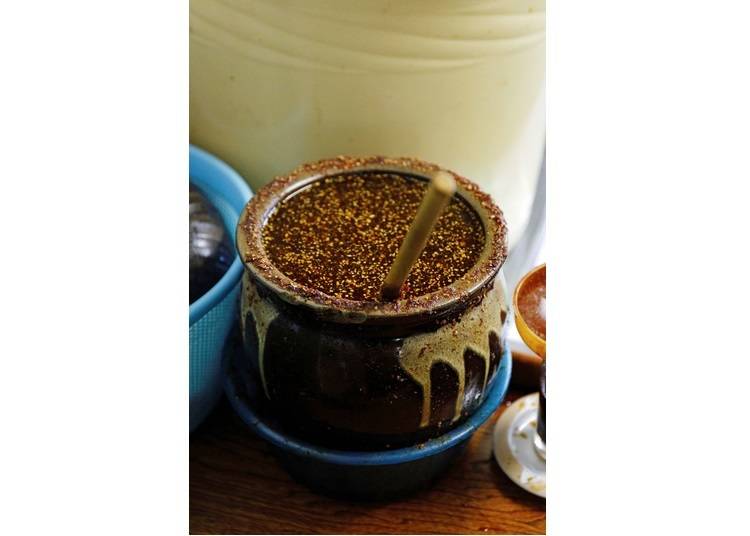
The restaurant knows the right cuts of meat, has perfected its original tangy dipping sauce, and uses the ideal cooking implements, such as a domed iron plate that allows the fat to drip to the bottom. The restaurant offers an original jingiskan pizza, but this is only available to take out.
A guide to grilling your own meat

The menu is varied and offer different cuts. If you're new to jingiskan, however, go for the shoulder of lamb (kata-rosu) and mutton thigh (mutton momo). The two types of meat make for a good contrast - the lamb has a lighter taste and texture, while the mutton has a deeper and richer flavor. If you order the dish as teishoku, it comes with rice, vegetables, and a bowl of hearty soup packed with mushrooms, onions, and chunks of meat.
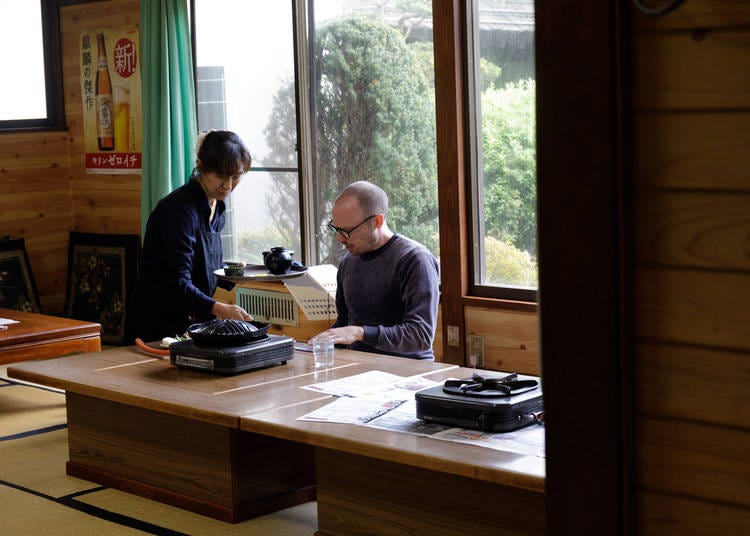
Staff fire up the special domed iron plate and give advice on how to grill the meat. First, rub the plate with pig fat - this allows for easier grilling. You'll notice that the dome-shaped plate serves a distinct purpose. As you grill the meat, the fat drips down the slopes of the plate and collects in the rim. If you stuff the onions and green peppers into the rim of the plate, the fat gives them a beautiful meaty kick. Fry the onions a little longer for that "burnt onion" taste.
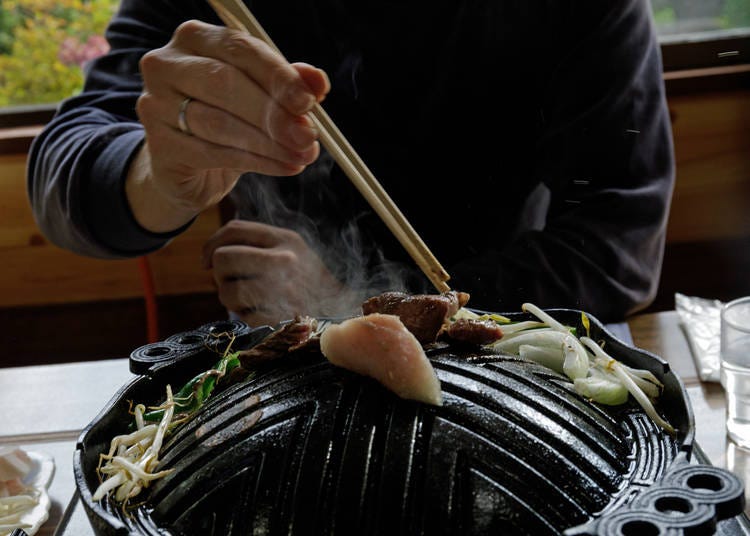
After staff bring your plate of beautifully red meat, take a few slices and grill them on both sides until all the red coloring has turned into a rich brown. Before eating, dip liberally in the tare sauce which gives the meat extra spice and fruitiness, and packs a gingery punch. The shoulder meat is so tender it melts in the mouth. The cuts of mutton are a little chewier but have less fat and a richer flavor, which blends well with the tare.
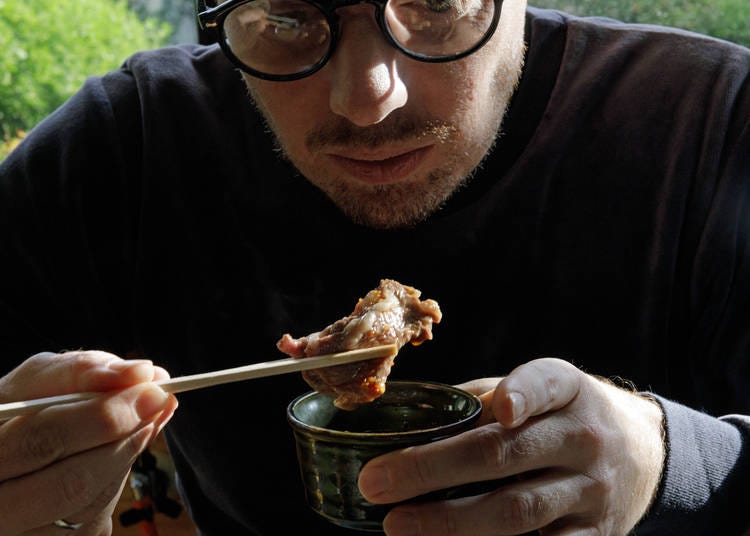
Iwate is known for its rice, which can be eaten on its own, but try layering the strips of barbecued meat and grilled onions and peppers on top for a satisfying and filling dish. After feasting on prime lamb meat at Jingiskan no Anbe, you'll understand why the Tono people are so proud of their culinary heritage.
-
Jingiskan no Anbeジンギスカンのあんべ
- Address 2-4-12 Hayase-cho, Tono, Iwate
Business hours:9 a.m.–7 p.m
Closed:Thursdays
Languages available:Japanese
Tel:0198-62-0601 (NPO Tono Natural Life Network)
Email:tourism@tonotv.com (NPO Tono Natural Life Network)
- Area
- Category
*Prices and options mentioned are subject to change.
*Unless stated otherwise, all prices include tax.
Popular Tours & Activitiess
Recommended places for you
-

Gyutanryori Kaku Denryokubiruten
Yakiniku
Sendai And Matsushima
-

Zensekikoshitsu Yakiniku Yokinikuya
Yakiniku
Sendai And Matsushima
-

kotoraS-PALsendai
Yakiniku
Sendai And Matsushima
-

Datenari
Yakiniku
Sendai And Matsushima
-

A5gyu Yakiniku Sushi TabehodaiNikujuhachi Sendaiekimae
Yakiniku
Sendai And Matsushima
-
Menu

Yaki NIQ
Yakiniku
Niigata And Sado
-
Ad

Why Fukushima is the Next Big Food Destination in Japan The Foodie Paradise Only 90 Minutes from Tokyo
-

Shopping in Akita: 11 Must-Buy Souvenirs & Where to Shop Near the Station and Airport
by: ShiroKu inc.
-

Smart Ways to Avoid Crowds and Enjoy a Safe, Comfortable Trip to Myoko, Niigata Prefecture.
-
Ad

Just one stop from Haneda Airport! "Truly Japanese!" Food, Fun, and Knowledge Gather at HICityⓇ Enjoy An Electrifying Night at "Japan Night Fever: Haneda Innovation City"
by: Yohei Kato
-
Ad

Advice from the Experts at Hitohira: Here's How to Choose the Best Japanese Knife
-

Shopping in Niigata: 9 Must-Buy Souvenirs & Local Sake to Take Home
by: ShiroKu inc.
-

Shirakami-Sanchi Guide: Hiking in Japan's Intense & Untouched Beech Forest (Aomori)
-

5 Restaurants Near Sendai Station: A Foodie's Guide to Local Flavors
-

Tokyo to Sendai: Riding the Shinkansen to Japan's Stunning Spots
-

Visiting the Sacred Japanese Gardens at Entsuin Temple in Matsushima
-

Sendai Food Guide: What to Eat and Where to Savor Local Delicacies
-

All About Yamagata's Exquisite Yonezawa Beef: Restaurants, Top-Grade Dishes & More!













